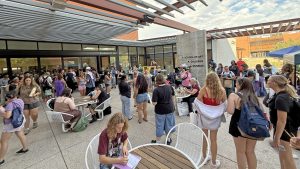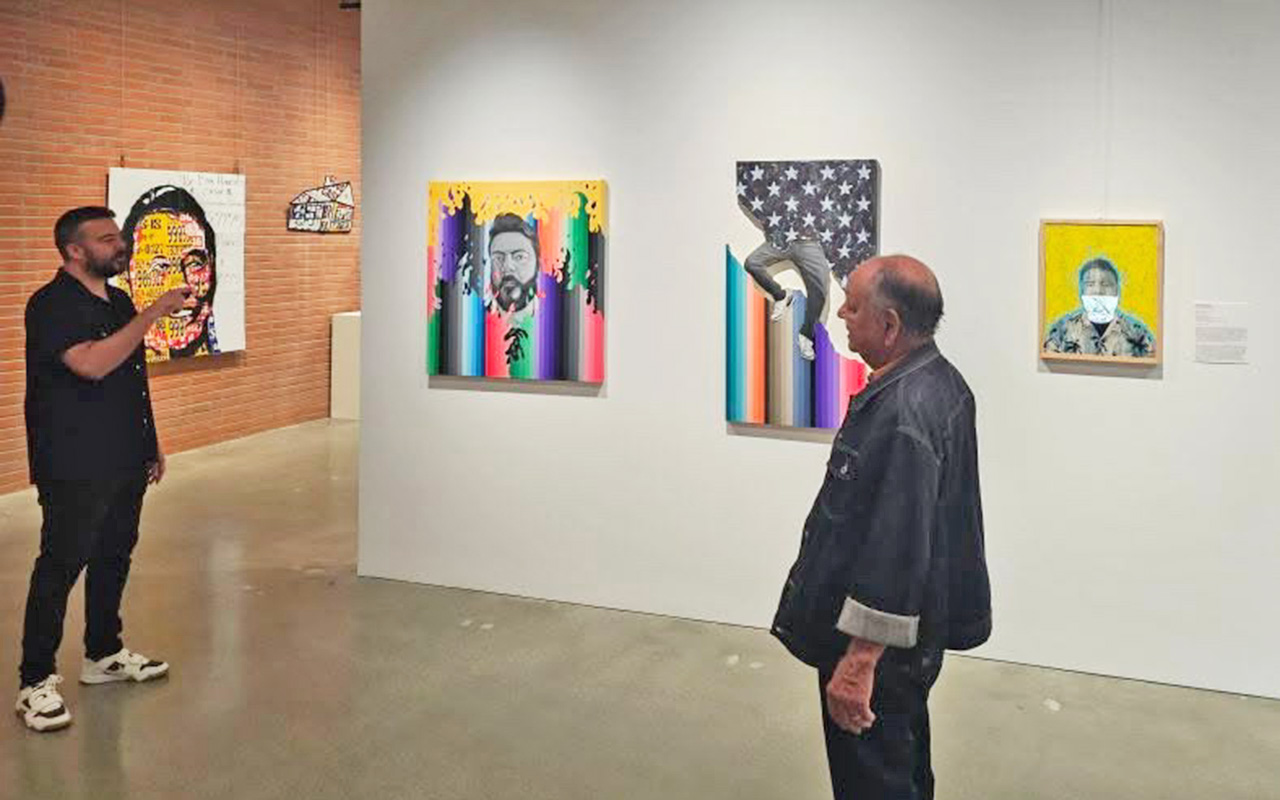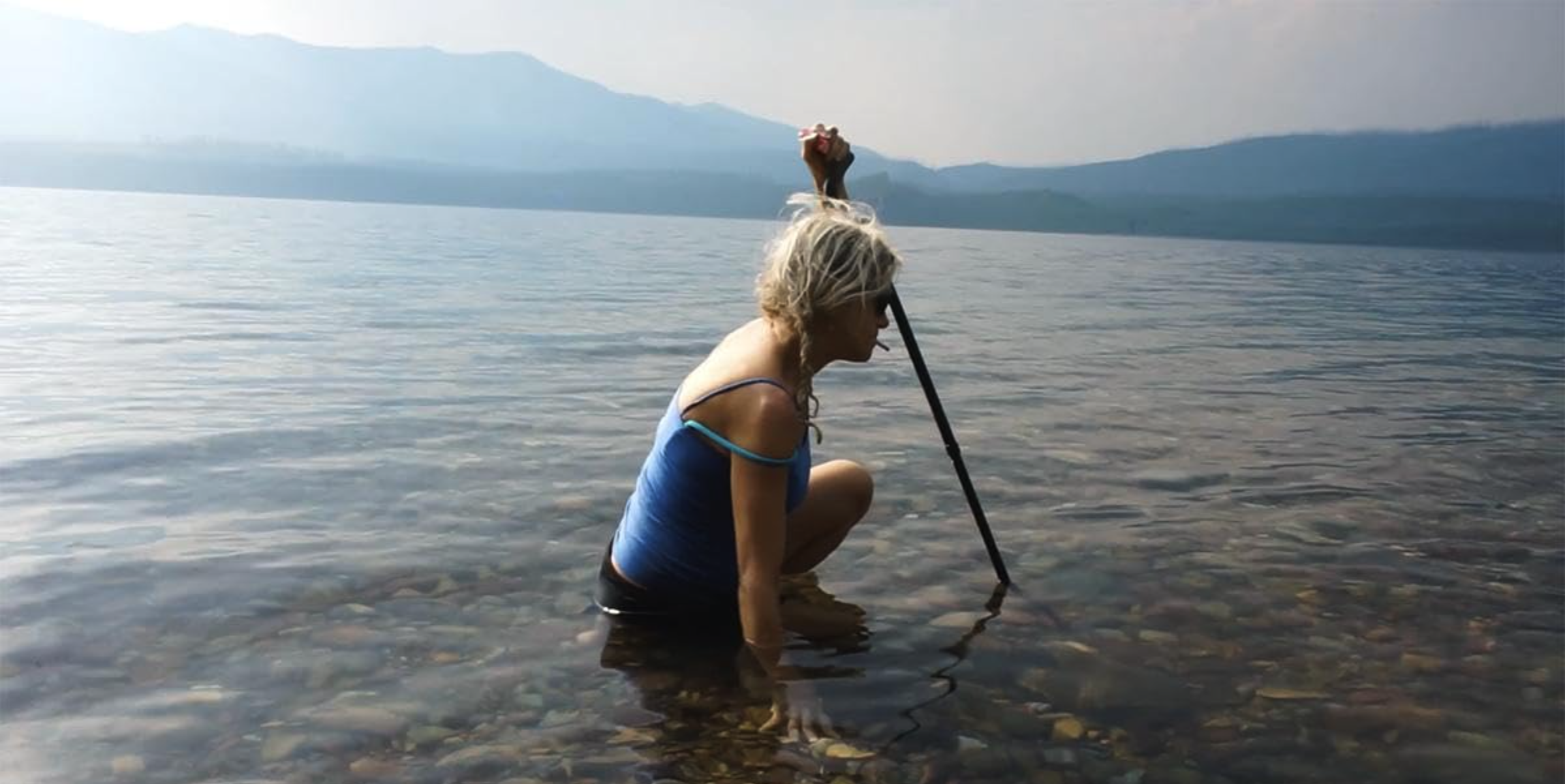
Mosley showcases social justice storytelling
By Michael Chesnick. February 27, 2023Before bringing her storytelling skills to the University of Arizona School of Art’s graduate program, Semoria Mosley found out just how impactful her photography could be during a social justice reporting project for the San Diego Union-Tribune called “____ while Black.”
Mosley amplified the voices of seven Black Americans who faced subtle and overt discrimination and exclusion in San Diego after interviewing more than 300 people. She told her editors, “I have hopes that the photographic art I create will give the invisible the superpower of being seen and probe the ones who never saw them to ask themselves, ‘How long have I ignored this voice?’”

Her hopes were answered.
“When it was published online and in print, I started getting calls and emails from San Diegans who felt moved by the work — it caught me by surprise honestly,” Mosley said. The seven profiles online contained film and digital photography, along with audio clips from her interviews.
She was one of six young journalists from diverse backgrounds selected to participate in the 2019 project, which won national and local awards. She grew up in Columbia, South Carolina, which has a 40 percent Black population compared to 6 percent in San Diego.
Mosley, 26, is pursuing her Master of Fine Arts in Photography, Video and Imaging after earning her B.A. in Mass Communication and Media Studies from Claflin University in South Carolina. “While emphasizing the Black American experience, my work is a portal to multicultural understanding,” she writes on her LinkedIn page.
She answered questions for the School of Art during February’s Black History Month.
Q. How did your Southern roots help you become a better photographer and storyteller?
A. Being from the South taught me that there is a truth that’s subjective (and pretty objective in my opinion, but y’know) to my lineage and a truth that is subjective to their lineage. It inspired me to look beyond the normal bounds of truth and storytelling to see where the proof could exist; beyond devices like bondage, history, racism and representation.
Q. How important is authenticity and preserving cultural identities in your work?
A. Preserving cultural identities in my work is imperative because it assists me in being resistant to colonial constructs and more uplifting of the “discredited way of knowing that discredited people often have” (to quote Toni Morrison) — which I find in myself. It’s the permission I’ve given myself to fully immerse in the actuality of my experiences. With representation on everyone’s plate, at the dinner party where all men are created equal, I have hopes that outside the smoke and mirrors, my work can serve as reference to a life truly lived — in all of its subjectivity, nuance, and vision.
Q. You attended the same middle and high schools as Dylann Roof, convicted in the 2015 racist slayings of nine members of a Black South Carolina congregation. How does that reminder affect you and your work?
A. It reminds me that Black, Brown and other colored communities are in close proximity to racists whose ideals can manifest in extreme ways and not even know it. In creating work, I realize I have no time to be slight in my expression as an artist; nor do I have time to explain. Walking on eggshells is a disservice to the resilience of my people. I think we’ve been cornered into being submissive to the voice that is not ours for far too long. My voice is my gift, so I work it as such.
Q. How did your Social Justice reporting project with the San Diego newspaper come about? What was the experience like?
A. I applied after my photo editor at the San Diego Union-Tribune suggested it. Of course, there weren’t any guarantees, but I’d just done 10 portraits for their front-page Sunday story — about a week after George Floyd was murdered. The editor knew I was eager to do more print work and that I would deliver, so it was a good opportunity. Working on that project solidified the passions I have for documenting, community and creating. I worked on it for about six months.
While I was excited, I was hesitant to speak about a community I had only been in for a year. Careful not to impose my idea of Black, my identity politics on to them, I asked the Black community what they dealt with. I interviewed anybody who considered themselves Black and was a native of San Diego — making exceptions for individuals who migrated to San Diego and/or lived there 10-plus years.
After listening to 300-plus people’s experiences, I picked seven to express the recurring sentiments I heard of Growing up / Birthing / Speaking up / Identifying / Fostering / Parenting / being Homeless … while Black. It was hard to meet the subjects because Covid was extremely new, we were about four months in. The subjects changed often due to feelings of health anxiety, targeting from the (police department) and not wanting to lose their jobs — I understood. I’d like to do a shout-out (to the subjects) — Mikey, James, Ms. Shelley, Eryn, Billy, Ms. Ebony, Diamondz and Ra — for lending their stories and voices. The community appreciated it. I appreciated it, much gratitude. …
I spoke on San Diego’s NPR about it which made more people engage with it. It made me more confident. Now, I have community in pockets across San Diego, that are just one call away if need be. I also keep up with what’s going on, always still there to lend a hand.
Q. What attracted you to attend the MFA Photography, Imaging and Video program at the School of Art?
A. friend of mine (alumna Nassem Navab, MFA, ’19) who I met in San Diego suggested it to me. She was a graduate of the PVI program and knew it’d benefit me. I had always wanted to go to art school and the opportunity presented itself as organically as it could. The care from the School of Art and PVI’s welcoming arms, it felt right — and you always do what feels right. I’d like to give a shout out to Nassem; you’re a real one!
Q. What project(s) are you working on now?
A. I’m working more with the moving image, making myself the subject, challenging my visual language. I’m definitely in an experimental phase, but I enjoy.
Q. What are your career goals after you graduate?
A. It’s too early to tell. Circle back in 2025!







